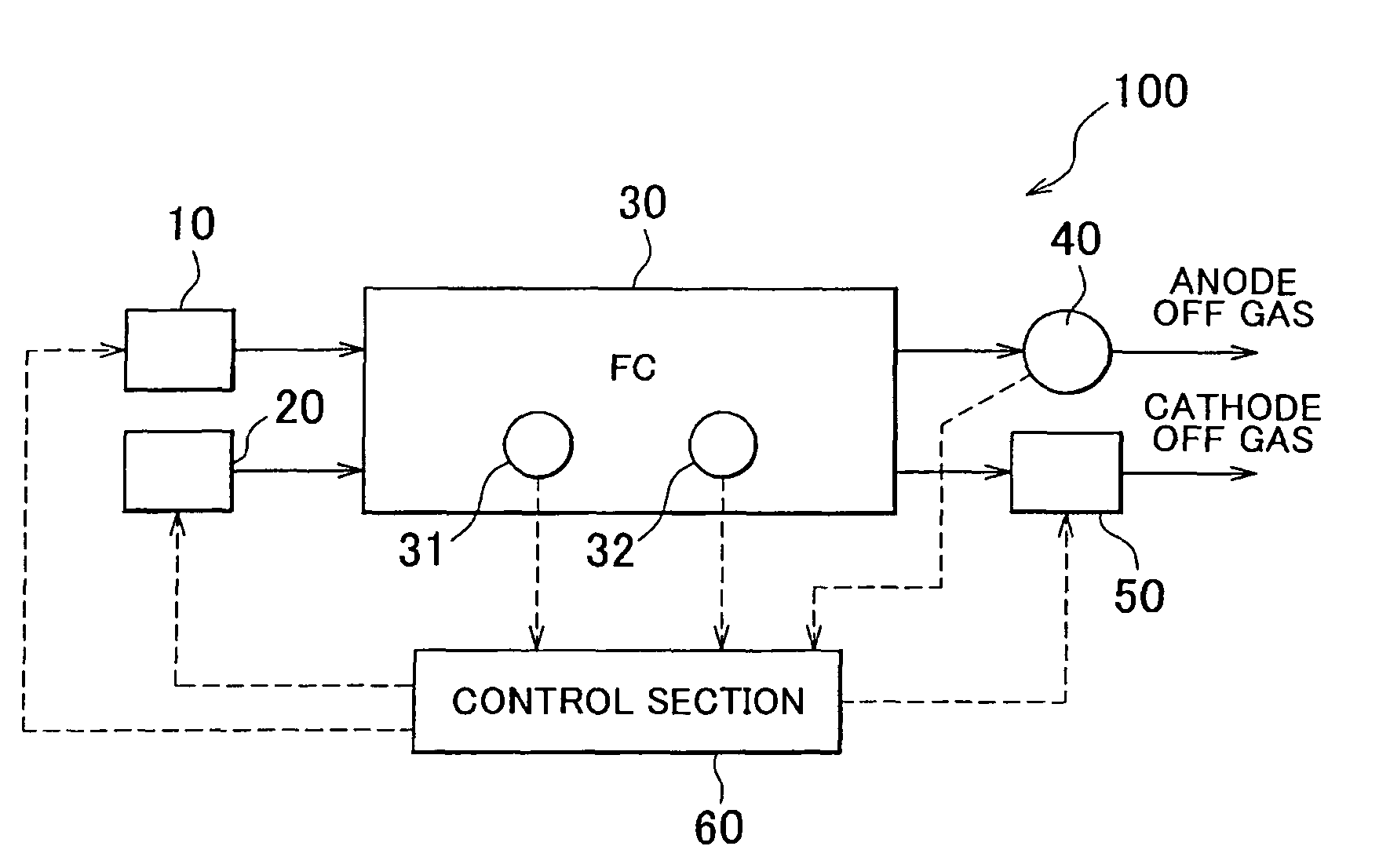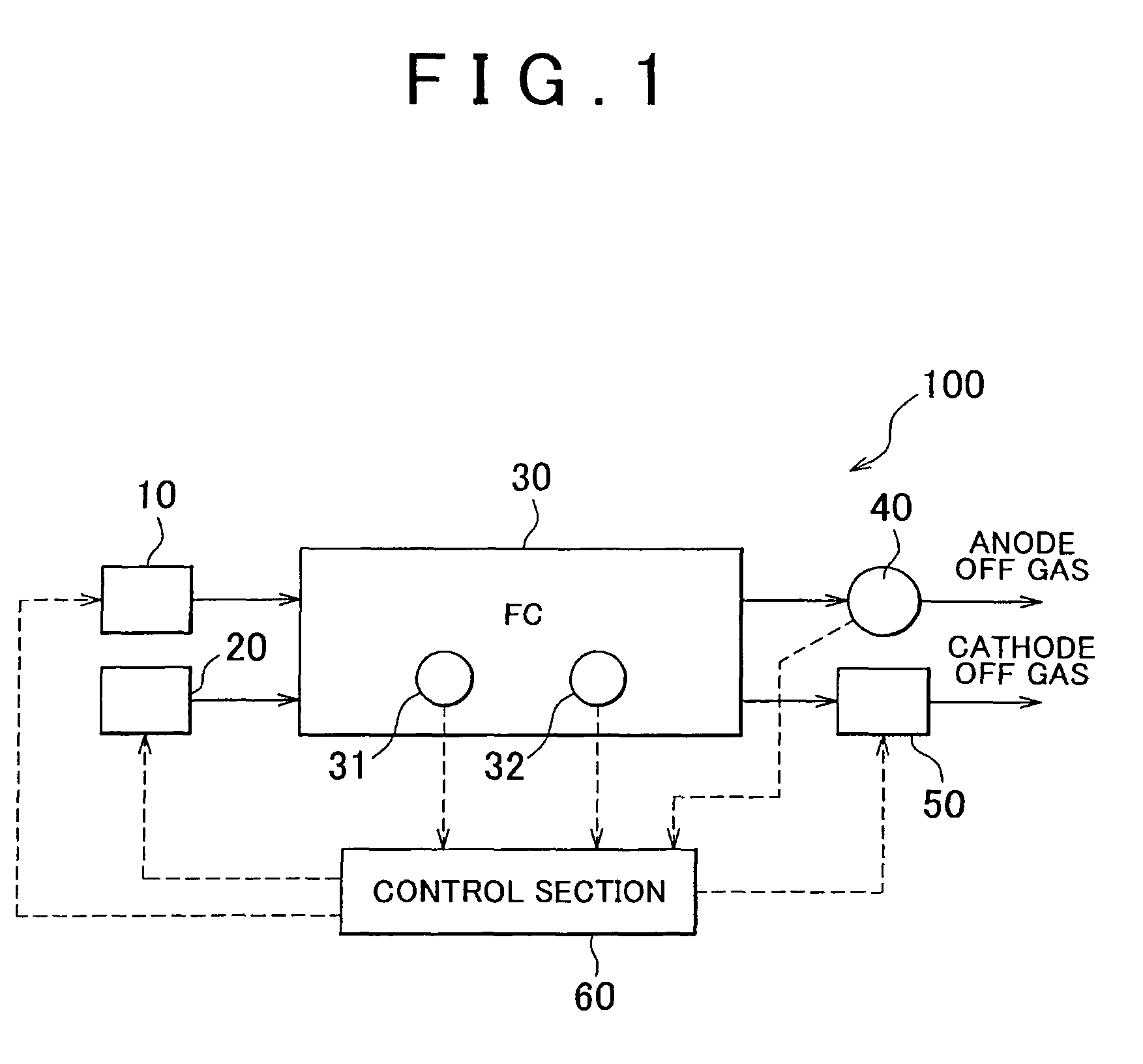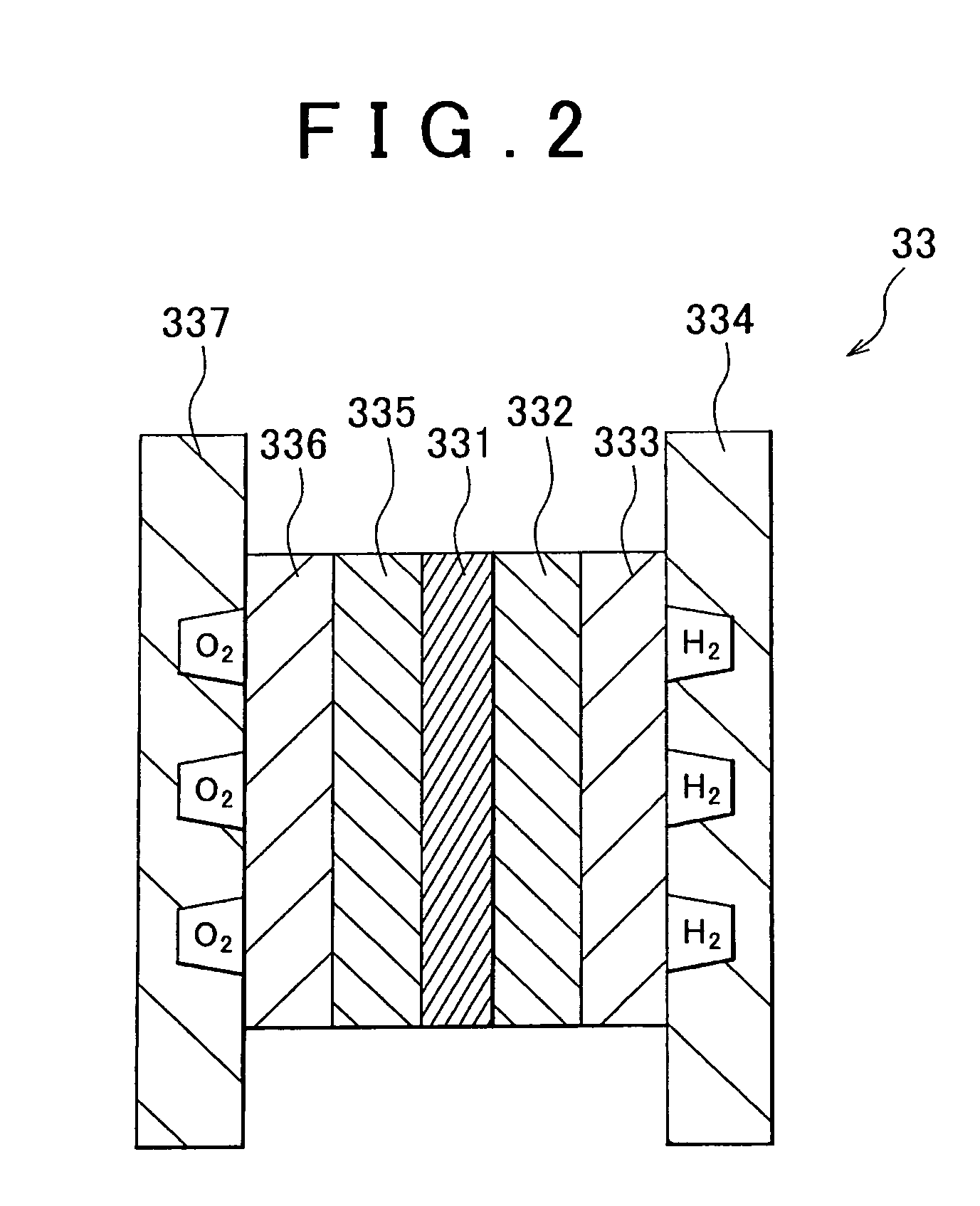Fuel cell system and fuel cell control method
a fuel cell and control method technology, applied in the direction of fuel cells, fuel cells, fuel cell grouping, etc., can solve the problems of not taking into account the conditions under which the power generation performance may be quickly recovered, and achieve the effect of quick recovery of the power generation performance of the cell
- Summary
- Abstract
- Description
- Claims
- Application Information
AI Technical Summary
Benefits of technology
Problems solved by technology
Method used
Image
Examples
Embodiment Construction
[0029]A fuel cell system 100 in accordance with an embodiment of the present invention is described with reference to FIGS. 1 and 2. FIG. 1 is a schematic diagram showing the overall configuration of the fuel cell system 100. FIG. 2 is a schematic cross sectional view of a cell 33. As shown in FIG. 1, the fuel cell system 100 includes fuel gas supply means 10, oxidant gas supply means 20, a fuel cell 30, a temperature sensor 31, a resistance sensor 32, a dew point sensor 40, a pressure regulation valve 50, and a control section 60.
[0030]The fuel gas supply means 10 supplies fuel gas containing hydrogen to the fuel cell 30. The fuel gas supply means 10 supplies the fuel cell 30 with fuel gas in accordance with instructions from the control section 60. The oxidant gas supply means 20 supplies oxidant gas containing oxygen to the fuel cell 30. The oxidant gas supply means 20 supplies the fuel cell 30 with oxidant gas in accordance with instructions from the control section 60.
[0031]The...
PUM
| Property | Measurement | Unit |
|---|---|---|
| temperature | aaaaa | aaaaa |
| thickness | aaaaa | aaaaa |
| current density | aaaaa | aaaaa |
Abstract
Description
Claims
Application Information
 Login to View More
Login to View More - R&D
- Intellectual Property
- Life Sciences
- Materials
- Tech Scout
- Unparalleled Data Quality
- Higher Quality Content
- 60% Fewer Hallucinations
Browse by: Latest US Patents, China's latest patents, Technical Efficacy Thesaurus, Application Domain, Technology Topic, Popular Technical Reports.
© 2025 PatSnap. All rights reserved.Legal|Privacy policy|Modern Slavery Act Transparency Statement|Sitemap|About US| Contact US: help@patsnap.com



